The Accelerator Laboratory provides foundation to scientific research at KEK
Particle accelerators are the basis of all research activities carried out at High Energy Accelerator Research Organization (KEK). KEK would even lose the reason for its existence, if it did not have particle accelerators. The Accelerator Laboratory (ACCL) operates all accelerators at KEK, and develops the performance of the beam, which provides the basis of all corporative experiment on elementary particles and nuclear physics and also material and life sciences, etc., for researchers in Japan and the world. It is also endeavoring to research and develop future accelerators and related technologies.
At Tsukuba Campus, ACCL has started the operation of SuperKEKB B-Factory (electron-positron colliding rings with an injector linac) toward higher-performance beam by upgrading KEKB B-Factory, which gave experimental verification to Kobayashi-Maskawa theory to win 2008 Nobel Prize in Physics. It also operates two rings at Photon Factory (PF and PF-AR), which is a pioneer of synchrotron light sources in the world as well as Slow Positron Facility. Also it performs R&D for the KEK LS as one of the candidates for future light source. In addition, developments for the International Linear Collider (ILC) have been done at experimental accelerators ATF and STF.
At Tokai Campus, ACCL has already started the operation of J-PARC for user’s experiments together with JAEA, and is paying a lot of efforts to improve beam performance with conquering various issues accompanied by a high intensity proton beam.
ACCL has conducted collaboration research with various accelerator laboratories and researchers in the world, including the United States (Fermilab, SLAC, Cornell Univ., JLab, etc.), Asia (IHEP-Beijing, Shanghai, Pohan, Taiwan, BINP, RRCAT etc.) and Europe (CERN, DESY, INFN, CEA, STFC etc.). Furthermore, collaborating with companies or other organizations, ACCL promotes R&D of accelerators for medical application and industrial application.
![]() US-Japan Science and Technology Cooperation Project (High Energy Physics) Mini-Symposium and Joint Committee Meeting was held from April 22 (Thu) to 24 (Sat). (2021.5.26)
US-Japan Science and Technology Cooperation Project (High Energy Physics) Mini-Symposium and Joint Committee Meeting was held from April 22 (Thu) to 24 (Sat). (2021.5.26)
![]() The US-Japan mini-symposium on high-energy physics was held online from April 22 (Thu) to 24 (Sat). ---more
The US-Japan mini-symposium on high-energy physics was held online from April 22 (Thu) to 24 (Sat). ---more
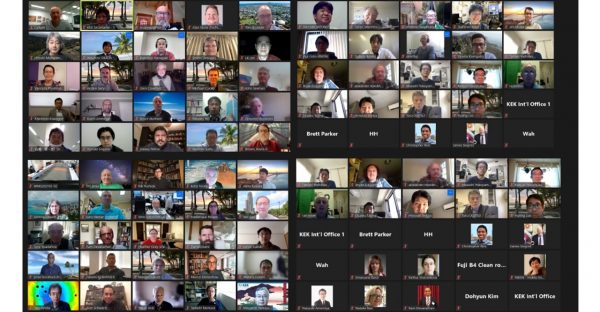
![]() The Asian Forum for Accelerators and Detectors “AFAD 2021” was held from March 16 (Tue.) to 18 (Thu.). (2021.3.24)
The Asian Forum for Accelerators and Detectors “AFAD 2021” was held from March 16 (Tue.) to 18 (Thu.). (2021.3.24)
![]() The Asian Forum for Accelerators and Detectors “AFAD 2021” was held from March 16 (Tue.) to 18 (Thu.).AFAD is a forum established in 2011 for the further development of collaboration and cooperation within the Asia-Oceania region in the fields of accelerator/detector and their related technologies/applications.Last year, the Forum was postponed due to the COVID-19 pandemic, but this time 204 participants from 8 countries/regions attended. ---more
The Asian Forum for Accelerators and Detectors “AFAD 2021” was held from March 16 (Tue.) to 18 (Thu.).AFAD is a forum established in 2011 for the further development of collaboration and cooperation within the Asia-Oceania region in the fields of accelerator/detector and their related technologies/applications.Last year, the Forum was postponed due to the COVID-19 pandemic, but this time 204 participants from 8 countries/regions attended. ---more
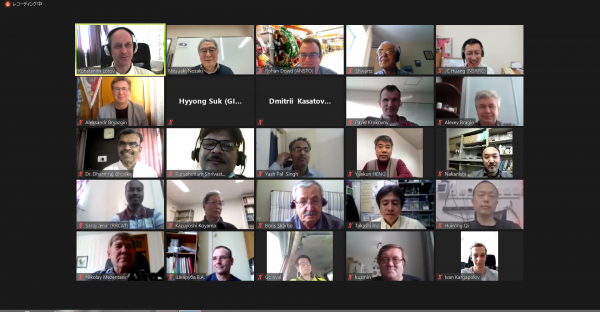
![]() The Announcement of the Next Director of J-PARC Center (2021.2.26)
The Announcement of the Next Director of J-PARC Center (2021.2.26)
![]() Prof. Takashi KOBAYASHI,
Prof. Takashi KOBAYASHI,
who is the current Head of Particle and Nuclear Physics Division, J-PARC Center/Deputy Director, Institute of Particle and Nuclear Studies, KEK, has been appointed as the next Director of J-PARC Center. This new appointment will be effective on the April 1, 2021 until March 31, 2024. ---more
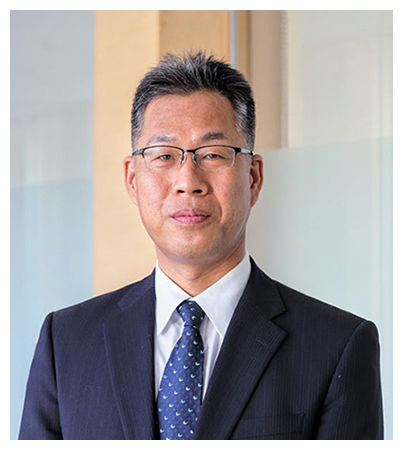
![]() The next Director of the Accelerator Laboratory determination (2020.11.27)
The next Director of the Accelerator Laboratory determination (2020.11.27)
![]() The Education and Research Council of KEK chose Tadashi Koseki as the next Director of the Accelerator Laboratory. ---more
The Education and Research Council of KEK chose Tadashi Koseki as the next Director of the Accelerator Laboratory. ---more
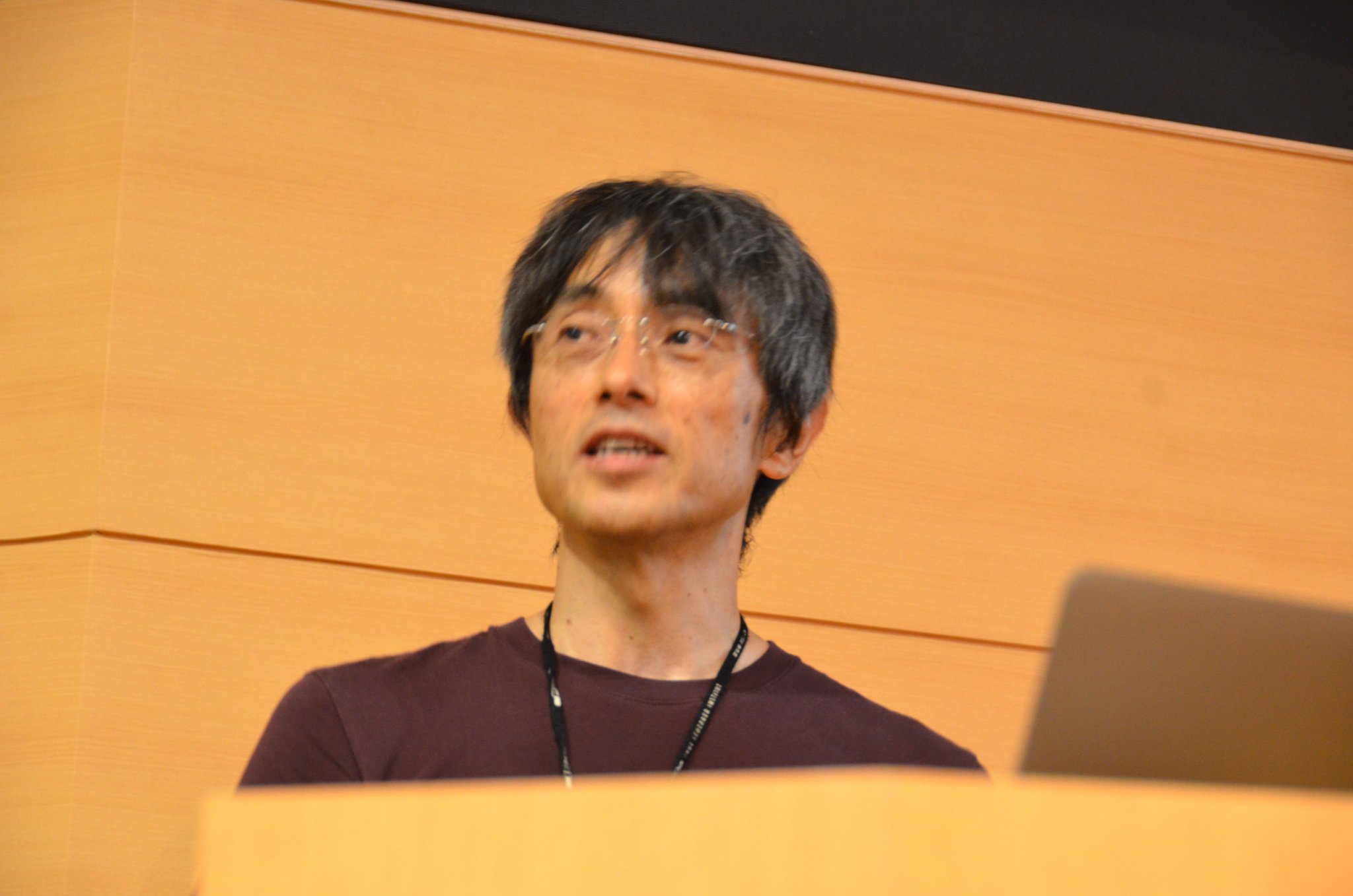
![]() The KEK Roadmap Open Symposium was held on July 6, 2020. (2020.8.4)
The KEK Roadmap Open Symposium was held on July 6, 2020. (2020.8.4)
![]() The KEK Roadmap Open Symposium was held on July 6, 2020 at KEK with remote connections.
The KEK Roadmap Open Symposium was held on July 6, 2020 at KEK with remote connections.
In order to describe the research strategy of KEK for 5 years (2014-2018), the current KEK roadmap was created in 2013, revised in 2016, and updated in 2019. KEK intends to renew the roadmap since the next KEK midterm target and plan period will start from April 2022. ---more
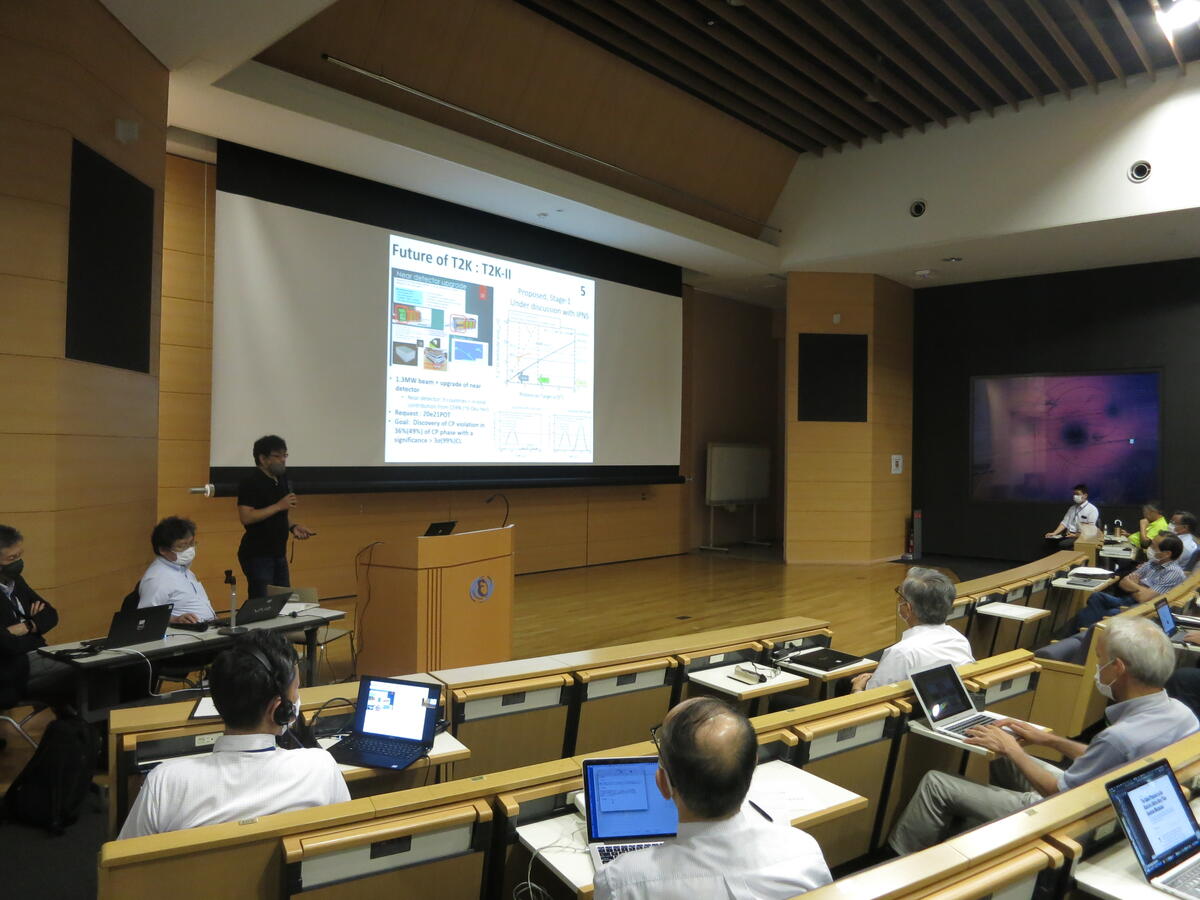
![]() SuperKEKB collider achieves the world's highest luminosity (2020.6.26)
SuperKEKB collider achieves the world's highest luminosity (2020.6.26)
![]() Japan’s High Energy Accelerator Research Organization (KEK) has been steadily improving the performance of its flagship electron-positron collider, SuperKEKB, since it produced its first electron-positron collisions in April 2018. At 20:34 on 15th June 2020, SuperKEKB achieved the world’s highest instantaneous luminosity for a colliding-beam accelerator, setting a record of 2.22×1034cm-2s-1. Previously, the KEKB collider, which was SuperKEKB’s predecessor and was operated by KEK from 1999 to 2010, had achieved the world’s highest luminosity, reaching 2.11×1034cm-2s-1. KEKB’s record was surpassed in 2018, when the LHC proton-proton collider at the European Organization for Nuclear Research (CERN) overtook the KEKB luminosity at 2.14×1034cm-2s-1. SuperKEKB’s recent achievement returns the title of world’s highest luminosity colliding-beam accelerator to KEK.(*)
Japan’s High Energy Accelerator Research Organization (KEK) has been steadily improving the performance of its flagship electron-positron collider, SuperKEKB, since it produced its first electron-positron collisions in April 2018. At 20:34 on 15th June 2020, SuperKEKB achieved the world’s highest instantaneous luminosity for a colliding-beam accelerator, setting a record of 2.22×1034cm-2s-1. Previously, the KEKB collider, which was SuperKEKB’s predecessor and was operated by KEK from 1999 to 2010, had achieved the world’s highest luminosity, reaching 2.11×1034cm-2s-1. KEKB’s record was surpassed in 2018, when the LHC proton-proton collider at the European Organization for Nuclear Research (CERN) overtook the KEKB luminosity at 2.14×1034cm-2s-1. SuperKEKB’s recent achievement returns the title of world’s highest luminosity colliding-beam accelerator to KEK.(*)
(*)The current record is 2.40×1034cm-2s-1, obtained at 00:53 JST on June 21st. ---more
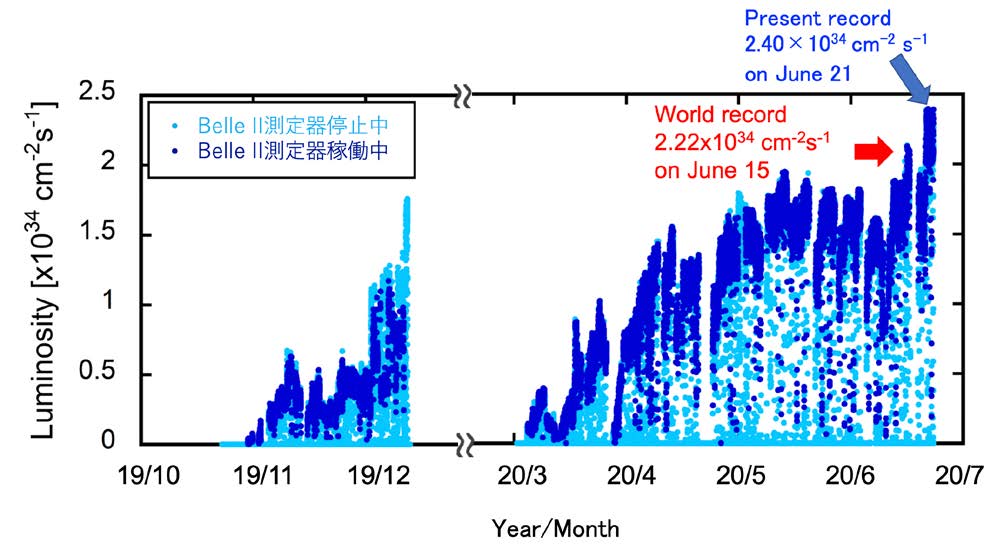
![]() "We are committed to making the ILC a success" - LCWS participants publish "Sendai Statement" in support of the International Linear Collider- (2019.11.1)
"We are committed to making the ILC a success" - LCWS participants publish "Sendai Statement" in support of the International Linear Collider- (2019.11.1)
![]() Scientists gathering in Sendai, Japan, for a scientific conference about a possible future particle physics projects to lead next generation of research following the Large Hadron Collider (LHC) at CERN in Geneva, Switzerland, reaffirmed their commitment to engage in the construction and scientific exploitation of the International Linear Collider (ILC) as a global project. ---more
Scientists gathering in Sendai, Japan, for a scientific conference about a possible future particle physics projects to lead next generation of research following the Large Hadron Collider (LHC) at CERN in Geneva, Switzerland, reaffirmed their commitment to engage in the construction and scientific exploitation of the International Linear Collider (ILC) as a global project. ---more
![]() KEK publishes the International Working Group's Recommendations for International Linear Collider (2019.10.2)
KEK publishes the International Working Group's Recommendations for International Linear Collider (2019.10.2)
![]() Tsukuba, Japan - 2 October 2019. KEK published a document on the recommendations for the International Linear Collider (ILC), a next-generation particle physics project, based on the report by the International Working Group on the ILC. The purpose of this document is to present some important aspects on implementation of the ILC project. ---more
Tsukuba, Japan - 2 October 2019. KEK published a document on the recommendations for the International Linear Collider (ILC), a next-generation particle physics project, based on the report by the International Working Group on the ILC. The purpose of this document is to present some important aspects on implementation of the ILC project. ---more
![]() STF-2 Beam Operation Demonstrates ILC Specifications (2019.5.28)
STF-2 Beam Operation Demonstrates ILC Specifications (2019.5.28)
![]() KEK’s Superconducting RF Test Facility (STF) operated the first beams during February and March 2019 and demonstrated results that satisfy the specifications for the International Linear Collider (ILC). ---more
KEK’s Superconducting RF Test Facility (STF) operated the first beams during February and March 2019 and demonstrated results that satisfy the specifications for the International Linear Collider (ILC). ---more
![]() ILC International Working Group Established -- First Meeting Held in Granada (2019.5.24)
ILC International Working Group Established -- First Meeting Held in Granada (2019.5.24)
![]() KEK established the International Working Group on the International Linear Collider (ILC) project to discuss issues such as international cost sharing. The First Meeting of the Working Group was held on Friday, 17 May, in Granada, Spain. ---more
KEK established the International Working Group on the International Linear Collider (ILC) project to discuss issues such as international cost sharing. The First Meeting of the Working Group was held on Friday, 17 May, in Granada, Spain. ---more
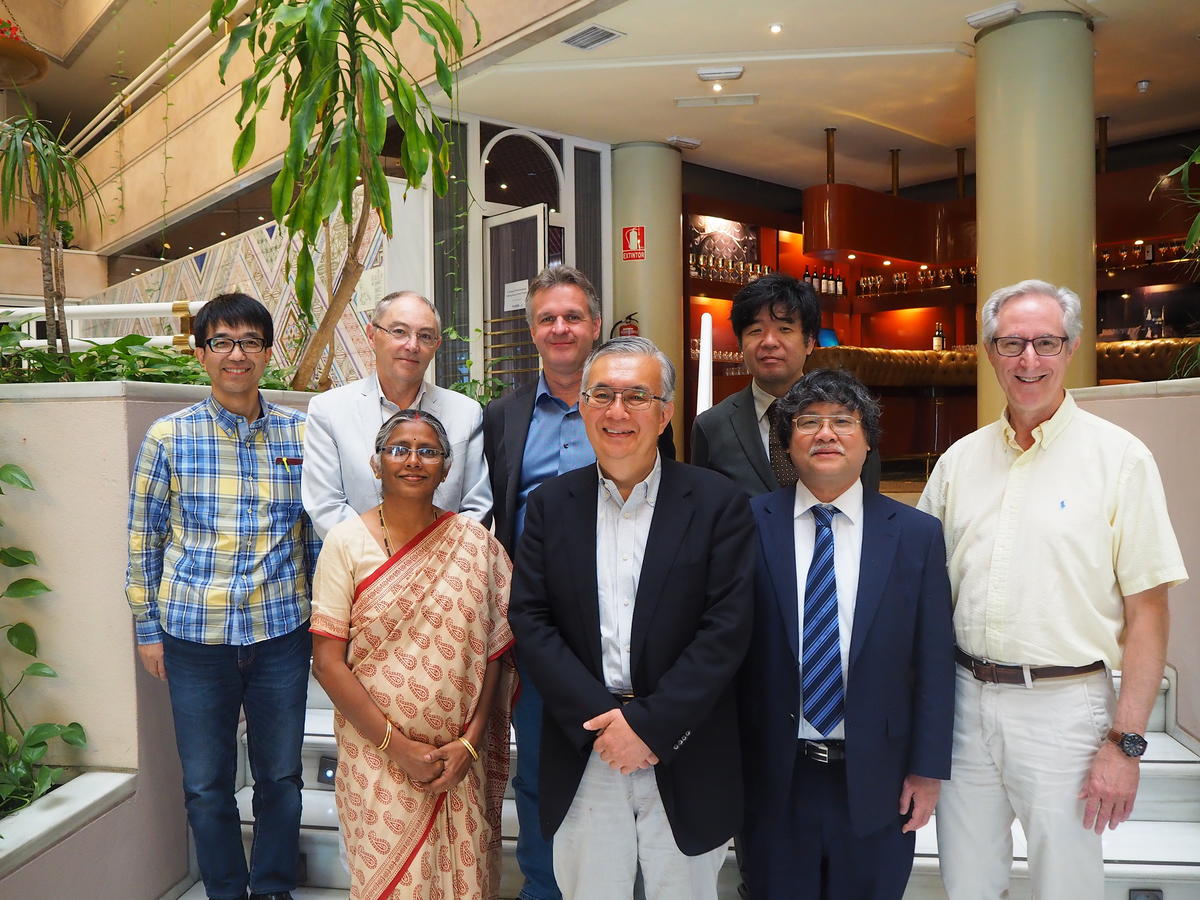
![]() To KEK users: Update on the fire in the accelerator structure assembly room at the electron-positron injector linac building (2019.4.26)
To KEK users: Update on the fire in the accelerator structure assembly room at the electron-positron injector linac building (2019.4.26)
INFO Dear KEK Users, The electron-positron injector linac has been brought back on line, with great support and assistance from many people in and outside KEK. ---more
![]() To KEK Users: On the fire in the accelerating structure assembly room at the electron-positron injector linac (2019.4.11)
To KEK Users: On the fire in the accelerating structure assembly room at the electron-positron injector linac (2019.4.11)
INFO Dear KEK Users,
We sincerely apologize for the great inconvenience and concern arising from this fire. We are also deeply appreciative of the understanding and offers of assistance. ---more
![]() News@KEK / Highlights Accl. topics
News@KEK / Highlights Accl. topics![]()
![]() First Beam Experiment by the Collaboration between 3 Nations: Japan, UK and USA (2011.06.23)
First Beam Experiment by the Collaboration between 3 Nations: Japan, UK and USA (2011.06.23)
![]() After 15 years of waiting the first tests of a novel Low Output Impedance (LOI) acceleration system with beam in the ISIS proton synchrotron at the Rutherford Appleton Laboratory (RAL), UK, were completed on April 17, 2011. The system was quite stable under high-intensity beam current, and the output impedance was measured to be as low as 35ohms, which is almost the design value and about 40 times lower than that in the existing acceleration systems. There is still much more work to do to make this system – or something like it – an operational part of a real synchrotron, but the initial results are very promising. This approach may point the way towards upgrades of existing accelerators and future high-intensity ones. ---more
After 15 years of waiting the first tests of a novel Low Output Impedance (LOI) acceleration system with beam in the ISIS proton synchrotron at the Rutherford Appleton Laboratory (RAL), UK, were completed on April 17, 2011. The system was quite stable under high-intensity beam current, and the output impedance was measured to be as low as 35ohms, which is almost the design value and about 40 times lower than that in the existing acceleration systems. There is still much more work to do to make this system – or something like it – an operational part of a real synchrotron, but the initial results are very promising. This approach may point the way towards upgrades of existing accelerators and future high-intensity ones. ---more

(![]() linked 2011.06.23)
linked 2011.06.23)
![]() Accelerated Higher Intensity Heavy Ion Beam with New Linac System (2011.04.14)
Accelerated Higher Intensity Heavy Ion Beam with New Linac System (2011.04.14)
![]() Research Laboratory for Nuclear Reactors in Tokyo Institute of Technology had developed a multi-beam type RFQ (Radio Frequency Quadrupole) linac system accelerating several heavy ion beams in parallel in one cavity. This system has made it possible for generating high intensity heavy ion beams, never before possible such as 100 mA and more, without growing the machine scale. ---more
Research Laboratory for Nuclear Reactors in Tokyo Institute of Technology had developed a multi-beam type RFQ (Radio Frequency Quadrupole) linac system accelerating several heavy ion beams in parallel in one cavity. This system has made it possible for generating high intensity heavy ion beams, never before possible such as 100 mA and more, without growing the machine scale. ---more

(![]() linked 2011.04.14)
linked 2011.04.14)
![]() Japanese 9-cell SCRF cavity meets ILC specifications (2010.12.09)
Japanese 9-cell SCRF cavity meets ILC specifications (2010.12.09)
![]() Designing and fabricating an optimal accelerating cavity is not so simple. There are two important parameters scientists are looking for: the gradient of 35 megavolts per meter (MV/m) and the quality factor (Q0) of greater than 8×109. A Japanese cavity now fulfilled those requirements for the first time at a test which took place at the Superconducting radiofrequency Test Facility (STF) at KEK, adding momentum towards future mass production. ---more
Designing and fabricating an optimal accelerating cavity is not so simple. There are two important parameters scientists are looking for: the gradient of 35 megavolts per meter (MV/m) and the quality factor (Q0) of greater than 8×109. A Japanese cavity now fulfilled those requirements for the first time at a test which took place at the Superconducting radiofrequency Test Facility (STF) at KEK, adding momentum towards future mass production. ---more

(![]() linked 2010.12.09 / ILC Newsline linked 2010.12.09 )
linked 2010.12.09 / ILC Newsline linked 2010.12.09 )
![]() Start operation of the Small Electron Linear Accelerator for calibration of the Fluorescence Detector of the Telescope Array experiment (2010.10.14)
Start operation of the Small Electron Linear Accelerator for calibration of the Fluorescence Detector of the Telescope Array experiment (2010.10.14)
![]() The Telescope Array ( TA ) experiment is a ultra-high energy cosmic rays ( UHECRs ) observation which is established in the desert area about 200 km far from Salt Lake City in Utah state, north U.S. We began the observation in April 2008. The UHECRs are the highest primary cosmic rays which have energy more than 1018 eV. However, we do not understand any fundamental features, for example the chemical composition, their generation and acceleration mechanism, and the theoretical flux limit ( GZK-cutoff ). ---more
The Telescope Array ( TA ) experiment is a ultra-high energy cosmic rays ( UHECRs ) observation which is established in the desert area about 200 km far from Salt Lake City in Utah state, north U.S. We began the observation in April 2008. The UHECRs are the highest primary cosmic rays which have energy more than 1018 eV. However, we do not understand any fundamental features, for example the chemical composition, their generation and acceleration mechanism, and the theoretical flux limit ( GZK-cutoff ). ---more

(![]() linked 2010.10.21)
linked 2010.10.21)
![]() Using Crab Cavities, KEKB Breaks Luminosity World Record (Current operation summary) (2020.6)
Using Crab Cavities, KEKB Breaks Luminosity World Record (Current operation summary) (2020.6)
Peak Luminosity2.40×1034cm-2s-1 (2020.6.21 0:53)
Daily Integrated Luminosity 1.4794 /fb (2009.6.14)
![]() International collaboration at KEKB
International collaboration at KEKB
■Global Collaboration Between KEKB and LHC on Crab Cavities(2008.10.3)![]()
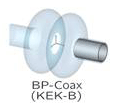
■CesrTA project at Cornell University(2008.9.29)
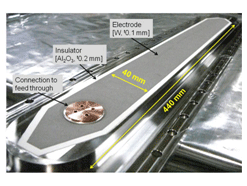
![]() Agenda of the 13th KEKB Accelerator Review Committee-11/29 - 12/5, 2007-
Agenda of the 13th KEKB Accelerator Review Committee-11/29 - 12/5, 2007-
![]() J-PARC News - May 2021 (Issue #193) July 6, 2021
J-PARC News - May 2021 (Issue #193) July 6, 2021
![]() J-PARC News - Apr. 2021 (Issue #192) May 28, 2021
J-PARC News - Apr. 2021 (Issue #192) May 28, 2021
![]() J-PARC News - Mar. 2021 (Issue #191) Apr. 30, 2021
J-PARC News - Mar. 2021 (Issue #191) Apr. 30, 2021
![]() J-PARC News - Feb. 2021 (Issue #190) Mar. 31, 2021
J-PARC News - Feb. 2021 (Issue #190) Mar. 31, 2021
![]() J-PARC Project Newsletter #82 May 19, 2021
J-PARC Project Newsletter #82 May 19, 2021
![]() J-PARC Project Newsletter #81 feb. 2, 2021
J-PARC Project Newsletter #81 feb. 2, 2021
![]() J-PARC Project Newsletter #80 Nov. 19, 2020
J-PARC Project Newsletter #80 Nov. 19, 2020
![]() J-PARC Project Newsletter #79 July 31, 2020
J-PARC Project Newsletter #79 July 31, 2020
![]() Nambu, Kobayashi and Maskawa win the 2008 Nobel Prize for Physics.(2008.10.7)
Nambu, Kobayashi and Maskawa win the 2008 Nobel Prize for Physics.(2008.10.7)
Kobayashi and Maskawa are awarded for the discovery of the origin of the broken symmetry which predicts the existence of at least three families of quarks in nature.
The Accelerator that Proved the Nobelists' Theory: KEKB
![]() The Nobel Prize in Physics 2008
The Nobel Prize in Physics 2008
On Wednesday, 24 September, KEK held a symposium entitled "Starting up the world's most powerful accelerators: LHC and J-PARC" in Tokyo. This symposium was the second one in a series of symposiums aiming for gaining more understanding of accelerator science.![]()



